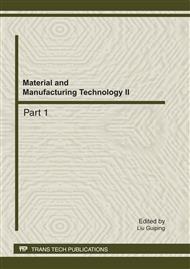[1]
R. Agrawal, and R. Srikant, Mining Sequential Patterns, Proceedings of the 11th International Conference on Data Engineering, pp.3-14, Taipei, Taiwan, (1995).
Google Scholar
[2]
R. Agrawal, and R. Srikant, Mining Sequential Patterns: Generalizations and Performance Improvements, Proceedings of the 5th International Conference on Extending Database Technology, pp.3-17, Avignon, France, (1996).
DOI: 10.1007/bfb0014140
Google Scholar
[3]
C. Antunes, and A.L. Oliveira, Sequential Patterns Mining Algorithms: Trade-off between Speed and Memory, Proceedings Of Second Intfl Workshop on Mining Graphs, Trees and Sequences (MGTS 2004), Pisa, Italy, (2004).
Google Scholar
[4]
J. Han, J. Pei, Y. Yin, and R. Mao, Mining Frequent Patterns without Candidate Generation: A Frequent-Pattern Tree Approach, Data Mining and Knowledge Discovery, Volume 8, Issue 1, pp.53-87, (2004).
DOI: 10.1023/b:dami.0000005258.31418.83
Google Scholar
[5]
F. Masseglia, P. Poncelet, and M. Teisseire, Pre-Processing Time Constraints for Efficiently Mining Generalized Sequential Patterns, Proceedings of the 11th International Symposium on Temporal Representation and Reasoning, pp.87-95, France, (2004).
DOI: 10.1109/time.2004.1314424
Google Scholar
[6]
M. J. Zaki, SPADE: An Efficient Algorithm for Mining Frequent Sequences, Machine Learning Journal, Volume 42, Issue 1-2, pp.31-60, Jan. (2001).
Google Scholar
[7]
J. Pei, J. Han, and W. Wang, Mining sequential patterns with constraints in large databases, Proceedings of the Eleventh International Conference on Information and Knowledge Management, pp.18-25, (2002).
DOI: 10.1145/584792.584799
Google Scholar
[8]
M. Y. Lin, and S. Y. Lee, Efficient Mining of Sequential Patterns with Time Constraints by Delimited Pattern-Growth, Knowledge and Information Systems, Volume 7, Issue 4, pp.499-514, May (2005).
DOI: 10.1007/s10115-004-0182-5
Google Scholar


